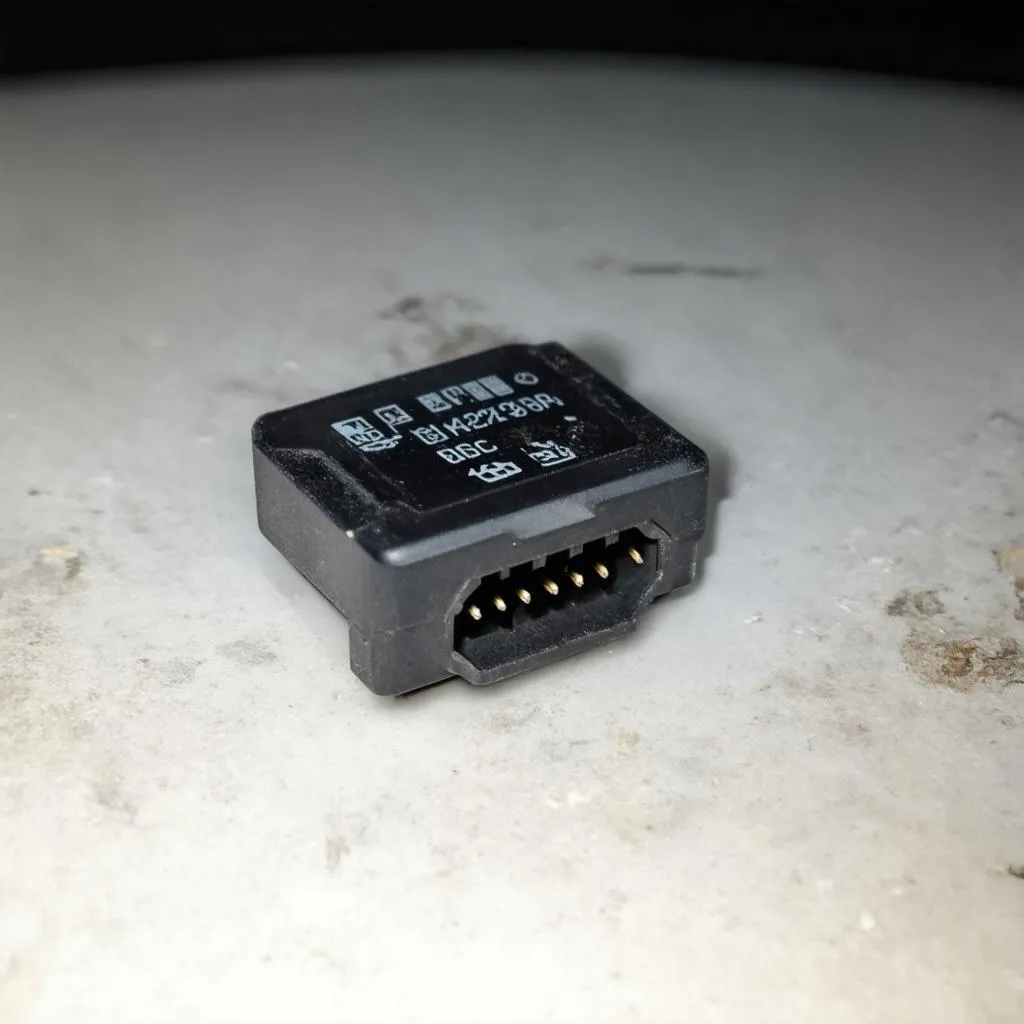Picture this: you’re cruising down the highway, enjoying the smooth ride and the wind in your hair (or at least, feeling the AC on your face!), when suddenly, a pesky check engine light throws a wrench in your plans. You pull over, grab your trusty OBD-II scanner, and bam – you’re staring at the cryptic code “P1705.” Now, unless you’re fluent in car-speak, this probably means nothing to you. Don’t worry, you’re not alone!
This scenario is all too familiar for many Ford owners. In this article, we’ll delve deep into the world of OBD code P1705, unraveling its mysteries and empowering you to tackle this automotive puzzle head-on.
Understanding the Language of Your Ford
Before we dive into the specifics of P1705, it’s important to understand that your car speaks to you through these codes. Think of them as your car’s way of saying, “Hey, something’s not quite right here!”
P1705: Transmission Range Sensor Circuit Malfunction (TRS)
In the case of P1705, your Ford is specifically flagging an issue with the Transmission Range Sensor (TRS) circuit. This sensor plays a crucial role in telling your car’s computer what gear you’ve selected (Park, Reverse, Neutral, Drive, etc.). When this communication breaks down, it can lead to a range of driving headaches.
Why Should You Care About P1705?
Ignoring this code is like ignoring a flashing “Caution” sign – it’s only a matter of time before things escalate. Here’s why addressing P1705 is crucial:
- Safety First: A faulty TRS can confuse your car’s computer, leading to unpredictable shifting or even preventing your car from starting in certain gears. Imagine your car suddenly shifting into neutral while driving – not a situation you want to find yourself in!
- Smooth Driving Experience: A malfunctioning TRS can cause rough shifting, making your daily commute feel less like a joyride and more like a bumpy rollercoaster.
- Preventing Further Damage: Ignoring P1705 could exacerbate the problem, potentially damaging other transmission components and leading to costlier repairs down the line.
Common Symptoms of a P1705 Code
While the check engine light is a surefire sign, your car might also exhibit these symptoms:
- Erratic Shifting: Your car might shift harshly, hesitate between gears, or even jump in and out of gear unexpectedly.
- Starting Problems: You might find it difficult to start your car, especially in “Park” or “Neutral.”
- Limp Mode: In severe cases, your car might enter “limp mode” to prevent further damage. This limits your speed and acceleration, forcing you to limp to a mechanic.
What Causes a P1705 Code?
Now that you understand the “what” and “why” of P1705 let’s explore the “culprits” behind this code:
- Faulty TRS: The most common cause is a worn-out or damaged Transmission Range Sensor itself.
- Wiring Issues: Damaged, corroded, or loose wiring connecting the TRS to the Transmission Control Module (TCM) can disrupt communication.
- TCM Problems: In rare cases, the TCM itself might be faulty, misinterpreting signals from the TRS.
Tackling P1705: What to Do Next
If you’re greeted by the dreaded P1705 code, don’t panic! Here’s a step-by-step guide to help you navigate the situation:
- Verify the Code: Before jumping to conclusions, double-check the code using a different OBD-II scanner to ensure accuracy.
- Inspect the TRS and Wiring: Visually examine the TRS and its wiring harness for any obvious damage, corrosion, or loose connections.
- Consult a Professional: Unless you’re comfortable with automotive electrical systems, it’s best to consult a qualified mechanic specializing in Ford vehicles. They have the expertise and tools to diagnose the root cause and recommend the appropriate repairs.
 Ford Transmission Range Sensor
Ford Transmission Range Sensor
Frequently Asked Questions About Ford Obd Code P1705
Can I still drive my car with a P1705 code?
While technically possible, it’s highly discouraged. Driving with a faulty TRS circuit compromises safety and could lead to further damage.
How much does it cost to fix a P1705 code?
The repair cost varies depending on the root cause. Replacing a faulty TRS is typically less expensive than addressing wiring issues or a faulty TCM.
Can I prevent P1705 from happening again?
Regular vehicle maintenance, including transmission fluid checks and addressing any wiring issues promptly, can help minimize the risk of encountering this code again.
Exploring Related Ford Transmission Issues
- P0700: Transmission Control System (TCS) Malfunction
- P0706: Transmission Range Sensor Circuit Range/Performance
- P0707: Transmission Range Sensor Circuit Low Input
Ford Models Prone to P1705
While P1705 can occur in various Ford models, some are more susceptible than others, including:
- Ford F-150
- Ford Explorer
- Ford Escape
- Ford Focus
 Ford Mechanic Diagnosing Transmission
Ford Mechanic Diagnosing Transmission
Keep Your Ford Running Smoothly
Remember, your Ford is a complex machine, and understanding its language is key to keeping it running smoothly. Don’t ignore those warning signs! Address any issues promptly to ensure a safe and enjoyable driving experience.
Need help deciphering those confusing diagnostic codes or want expert advice on your Ford’s transmission? Contact us via Whatsapp at +84767531508. Our team of automotive specialists is available 24/7 to assist you with all your diagnostic tool needs!
We hope this article has shed some light on the often-confusing world of Ford Obd Code P1705. Remember, knowledge is power when it comes to car care. Safe driving!
Do you have any other questions about Ford OBD codes or car maintenance in general? Share them in the comments below! Let’s keep the conversation going.